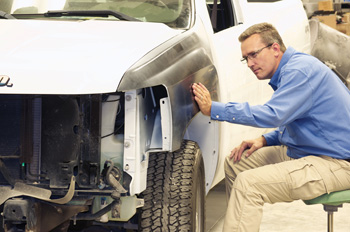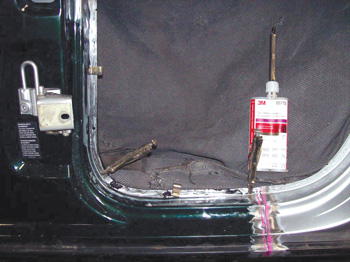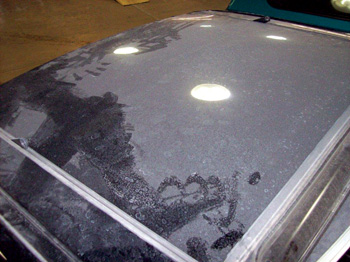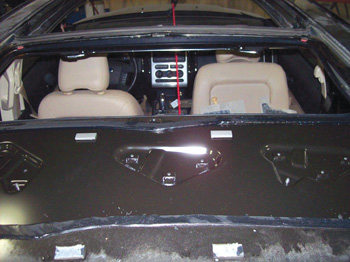 Change is the one constant in life we can count on. It’s happening right now in vehicle manufacturing with the additions of new electronics for comfort and safety and changes in designs to add strength but reduce weight. This evolution is the reason shops need to be educated on the repair of these vehicles. Identifying these changes and adapting to new repair procedures will help shops maintain vehicles’ structural integrity and service life longevity — not to mention keep the shop’s quality and integrity intact.
Change is the one constant in life we can count on. It’s happening right now in vehicle manufacturing with the additions of new electronics for comfort and safety and changes in designs to add strength but reduce weight. This evolution is the reason shops need to be educated on the repair of these vehicles. Identifying these changes and adapting to new repair procedures will help shops maintain vehicles’ structural integrity and service life longevity — not to mention keep the shop’s quality and integrity intact.
These vehicle changes have been driven by numerous factors. One is the new Corporate Average Fuel Economy (CAFÉ), which will require vehicles to hit 54.5 miles per gallon by 2025. To meet this standard, automakers are increasing their use of combinations of lighter construction materials. This “hybrid construction” will create a challenge for shops.
In the automotive world, most people think of Hybrid Electric Vehicles (HEVs) when they hear “hybrid.” HEVs combine internal combustion engines and electric drive systems. Simply defined, hybrid is the combination of two or more different things.“Hybrid construction” is the use of two or more materials to manufacture vehicles. The evolution of today’s automobile has required shops to rethink, retool and retrain on how vehicles are repaired. To learn about materials currently being used and what is coming, take I-CAR classes New11 and New13. I also recommend taking SPS07 and the new AIL01.
 Aluminum and Steel
Aluminum and Steel
One trend is that a lot of automakers are using aluminum to reduce vehicle weight. The increased use of aluminum is driving the need for more production and expansion of existing suppliers. The combination of steels and aluminum in vehicle construction will only increase in years to come. The trend of manufacturing more high-production, aluminum-intensive vehicles for consumers is also evident with the introduction of the Mercedes Benz SL.
The 2013 Honda Accord Front Subframe is an example of a vehicle that combines steel and aluminum. This not only reduces weight but increases the rigidity of the suspension mounting points. The two metals are joined by a factory process called friction stir welding (I-CAR NEW13). It’s a factory-only procedure of joining galvanized steel and aluminum. The use of galvanized steel prevents corrosion between two dissimilar metals.
But hybrid construction can also be used in a combination of steels that are different in strengths and mechanical properties. Stronger steels in the 700 MPa to 1,500 MPa range may require different welding procedures. The 2013 Honda Accord does not allow GMA (MIG) plug welds to be done on the 1,500 MPa steel (I-CAR NEW13). Instead, MIG brazing is required.
Why Change?
 Hybrid construction is changing many procedures in collision shops. “I’ve been doing it this way for 20 years. Why should I change?” becomes a dangerous statement to a shop that values its reputation of quality and skill. It can also be dangerous from a liability standpoint.
Hybrid construction is changing many procedures in collision shops. “I’ve been doing it this way for 20 years. Why should I change?” becomes a dangerous statement to a shop that values its reputation of quality and skill. It can also be dangerous from a liability standpoint.
Rivet bonding, weld bonding and MIG brazing are procedures shops need to learn and use every day. Squeeze Type Resistance Welding (STRSW) is also recommended for many repairs. If a shop doesn’t have the equipment to do STRSW, alternate repair procedures may be required.
Adhesives
The majority of procedures to date have involved adhesives. Their ability to bond to many different substrates at the same time has given them a multi-purpose role. They not only bond the materials, giving them good strength characteristics, but also add rigidity and stiffness. These properties allow the vehicle to not only be stronger but quieter.
Adhesives also have good corrosion protection properties, an area often overlooked during repairs. They bond materials but also separate the materials, preventing galvanic corrosion.
 Fasteners
Fasteners
Mechanical fasteners are also being used in the factory, in some cases in place of welds to bond panels with adhesive. Using rivets to join aluminum to steel has been and still is being used extensively. The Cadillac ATS uses rivets and adhesives to bond the aluminum front wheelhouse to the upper and lower rails. A new procedure using flow drill screws is being used to join aluminum panels to boron alloyed steel and inner aluminum structures, such as on the 2011 Audi A8 and 2013 Porsche 911 Carrera.
On aluminum panels or aluminum intensive vehicles, flange preparation is critical to the performance of this material. To prevent weak links in the repair, prep all flanges according to directions. This may involve flame treating the flange, then applying primer before bonding the aluminum parts – a procedure recommended by BMW and Jaguar. More training can be found in I-CAR AIL01.
Carbon Fiber
Carbon fiber is a lightweight, extremely strong construction material. Since it’s so expensive, its use thus far has been limited to high-end luxury models. Future vehicles may have more carbon fiber in them as mass production procedures evolve and costs go down.
Carbon fiber panels could be attached using bolts, rivets or adhesives with rivets. Lexus is producing a vehicle with a carbon fiber exterior similar to the Corvette, where most of the exterior panels are made of this composite. Carbon fiber can be repaired under certain criteria. I-CAR PLA03 covers many types of repairs on these materials.
Magnesium
Magnesium door shells with aluminum skins are being used on the Jaguar XJ and on the Ford MKZ liftgate. These durable and lightweight doors help reduce stress and fatigue associated with opening and closing. Magnesium is also used on the core support of the 2011 Jaguar XJ.
Panel Removal
Repairers these days even have to stop and pause before removing panels due to the fact that heat can damage the steel or corrosion protection on damaged or adjacent panels. New spot welding removing tools that don’t also remove the thin surrounding metal reduce the need to use drill bits, which can be destroyed during panel removal.
When using drill bits, technicians should be careful not to leave material or let material come in contact with other materials. Using a vacuum instead of a blow gun will prevent metal contamination to other vehicles. This also helps to reduce technicians’ exposure to metals in the shop air.
Ford roof panels or the new aluminum roof panels being used on steel structure vehicles are now adhesively bonded or rivet bonded using urethane similar to the kind used for windshields. Shops must follow recommendations when adhesive bonding the aluminum panel to the steel structure since the use of incorrect urethane could cause part failure. A non-conductive urethane is recommended to prevent corrosion between the aluminum and adhesive. Although I-CAR GLA02 is a glass replacement course, it teaches all the technical procedures for using adhesives in performing a quality repair.
The Big Picture
With all this hybrid construction going on today, it’s critical to identify materials you’re working on. Training on aluminum repair, MIG brazing and other repair procedures is necessary. Without this information, a technician could cause serious damage or do an improper repair, damaging a shop’s credibility along with increasing its exposure to liability. Understanding procedures and why they’re used will help technicians make good decisions for shops and vehicle owners.
Mitch Becker is a technical instructor for ABRA Auto Body & Glass. Contact him at (763) 585-6411 or [email protected].













